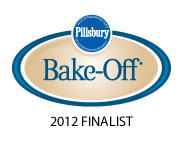
I walked into the kitchen this afternoon after putting Posie down for a nap and I noticed Lillie mixing up chocolate milk for Daisie and herself. How nice I thought of her to help her sister. Then I glanced at the quart of milk and the size registered first, wait that's not the gallon we usually use, then my synapses started firing as I grabbed the carton before Lillie poured a glass for herself. "That's buttermilk!" I said. "Oh, I guess that's why Daisie didn't like it." Lillie said. I just laughed to myself at this kitchen mix-up. We've all had them. Anyway, the buttermilk was left over from some amazing biscuits I made last week which I adapted from my new favorite cooking website, Taste and Tell. The blogger tries recipes, almost daily, from different blogs and cookbooks and reports on them. The pictures are as mouth watering as the recipes.
Much to my chagrin, in over 200 pages of biscuit recipes and instructions, the authors did not include one gluten free recipe. However, biscuits inherently lend themselves to gluten free baking for the following reasons:
1) Biscuits are best made with low gluten flour, such as the Southern all-purpose brands which have less gluten than national brands. That is because you don't want to create elasticity as you would with a yeast bread.
2) Gluten free bread recipes yield a "quick bread" type batter, even the yeasted ones, as opposed to an elastic dough for yeast breads. Biscuit doughs are similar in texture to gluten free bread.
3) Biscuits should not be overworked as you want to hinder the gluten production for a flaky crumb (see #1 above). You can never overwork gluten free flour. It will never get tough.
I wanted to see if I could replicate Southern-style biscuits using gluten free flour. In the past some of the gluten free bread recipes I've made have come out like biscuits, so I felt optimistic. One has the option of making a rolled biscuit, which is cut with a biscuit cutter (actually patted into place not really rolled with a rolling pin), or drop biscuit. Being a long term Bisquick fan, I prefer the drop method. Employing a very American attitude, I feel if you can prepare a biscuit in 10 minutes, why wait 20.
Despite not actually having any gluten free recipes in Southern Biscuits, Dupree and Graubart's book did come in handy as far as learning the biscuit making technique-- which I was then able to apply to gluten free biscuits. The book has very helpful pictures that instruct you how to "snap" the fat into the flour. Basically you add pieces of softened butter, shortening or margarine to the flour, dig your hands in and glide your pointer and middle fingers across your thumbs--a snapping motion. By working the fat into the flour this way, you create little pockets of fat which will melt upon baking, creating flaky layers. Then the liquid is added to the center of the flour mixture and you sweep the flour into the liquid with your hands or a spoon. The result is a light, delicious and authentic tasting Southern biscuit. Bon Appetit y'all!

Butter really does make everything better!
Although the distinctive tang of buttermilk gives this recipe an authentic flavor, you can easily make this recipe non-dairy by substituting acidulated soy or rice milk (see below) and margarine instead of butter.
2 1/4 cups all-purpose gluten free flour blend with xanthan gum (I used Jules brand)
1 Tablespoon baking powder
1 1/4 teaspoons salt
1/2 cup butter or non-hydrogenated margarine (such as Earth Balance Buttery Sticks), softened, cut into cubes
1 1/4 cups buttermilk or acidulated milk*
1 beaten egg white, optional
*To make acidulated milk: For every 1 cup of milk (cow's, soy or rice), stir in 1 tablespoon of white vinegar and allow to sit for 10 minutes.
Pre-heat the oven to 450F. Spray a cookie sheet with non-stick cooking spray.
Sift together the flour, baking powder and salt into a large mixing bowl. Add in the butter or margarine, and using a pastry cutter, or your hands with the "snap" method as described above, cut the fat into the flour mixture. Cover and place in the refrigerator for 10 minutes.
Remove bowl from the refrigerator. Make a well in the center of the flour mixture and add in the buttermilk slowly and stir just until combined.
Spoon the dough by about 1/4 cup scoops onto prepared cookie sheet, 2-inches apart. Brush with egg white, if desired. Bake in 450F degree oven for 15 to 20 minutes, until lightly browned.
Remove from the oven and turn upside down onto a plate to cool (I got this tip from Nathalie's book).
Yield: 8-10 large biscuits
Serving suggestion: Serve warm with butter and blackberry jam. Leftover biscuits can be kept in a plastic bag at room temperature for a day or two and re-heated before serving. Cold biscuits leave a lot to be desired!










